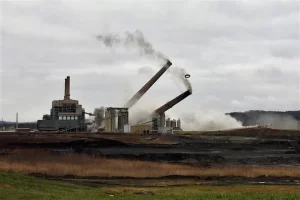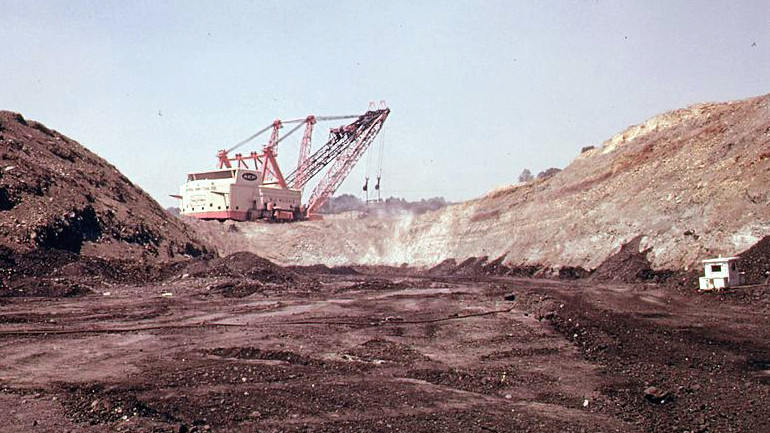We are a region in transition, ripe with opportunities and resources, and a track record of attracting and retaining investment. We are actively seeking partners to build a better future for our citizens and our environment.
Southeastern Ohio






Historically, natural resource extraction activities such as coal mining, timbering, and oil and gas production have been prevalent in southeastern Ohio. More recently power generation and iron and steel producers have been significant employers in Appalachian Ohio. Many of those facilities are now closed, have left the region, or have downsized. While strongly supported when they operated, these industries have not only affected the area’s environment, but also the regional economy. The pullout of industry, in many cases, has left residents without employment and has scarred portions of the area’s landscape. Thousands of highly-skilled laid-off workers currently commute long distances outside of their communities for work.
Although the economic transition has created challenges for southeastern Ohio, the region boasts significant opportunities. The region’s available skilled labor, industrial-scale infrastructure, and excellent transportation can now be your business’ competitive advantage.
Southeastern Ohio is looking for Employers to Diversify our economy and Reduce Reliance on Fossil Fuel Industries
Prospective employers have an extraordinary opportunity to help the region diversify itself from greenhouse gas-intensive industries. Just since 2010, job losses in mining and power generation have caused the loss of nearly 5,800 jobs in our rural region. Many of these facilities were the largest employers and taxpayers in counties, leaving economic craters. The region has targeted advanced manufacturing, logistics and distribution, automotive, aerospace, and back-office jobs as targeted sectors for economic growth.
Invest in a Region Vying for Economic Equality
Due to challenges from pivoting from resource extraction to more diverse sectors, Appalachian Ohio’s economy has not enjoyed the growth the rest of Ohio has benefitted from. This has left the region with above-average poverty rates (about 18% region-wide) and local communities with the burden of providing additional social services without the needed revenue. Investing in an underserved community like those in southeastern Ohio would be a powerful message to investors and shareholders about a firm’s willingness to promote economic equality.
The Business Case for Southeastern Ohio
The region has an abundance of highly skilled workers and lower-than-average costs of labor. The area also boasts a lower cost of doing business while having a robust four-lane highway system, industrial infrastructure with excess capacity, and available sites. Higher education institutions are numerous within the region, including Ohio University, which is designated as an RI research institution. Additional institutions such as Ohio State University, the University of Cincinnati, Marshall University, and West Virginia University are a short drive from many southeastern Ohio cities. The region also possesses an above-average concentration of veterans, many of whom are equipped with tremendous skills.
Examples of companies that have invested tens of millions of dollars in the last several years include General Mills, General Electric Aviation, PACCAR-Kenworth, Dollar General Corporation, and many more. Dozens of Fortune 500 companies currently call southeastern Ohio home.
Examples of Investments That Can Make a Difference:
- Constructing a new distribution center at one of our shovel-ready sites like the Dan Evans Site in Gallia County, which is home to two large but aging coal-fired powerplants
- Standing up back-office operation in one of our historic downtowns like in Chillicothe.
- Establishing a new manufacturing facility at the ready-to-go South Central Ohio Industrial Park.
- Hiring with a preference for remote workers in the region or standing up a remote work center in beautiful downtown Zanesville or charming downtown Marietta.
Sustainability Benefits of Southeastern Ohio
Doing business in southeastern Ohio affords a firm a variety of benefits that can help minimize their impact on the environment. Examples include:
- The Ohio River is an excellent source of efficient transportation as a barge can move a ton of cargo 647 miles with a single gallon of fuel. The region provides several ways to access the Ohio River for barge transportation.
- Abundant railway networks in the region provide similar benefits. Trains can haul one ton of goods an average of 480 miles on a single gallon of fuel. Carriers in the region include Norfolk Southern, CSX, Genesee and Wyoming, Watco, and several regional short liners.
- Due to the region’s industrial heritage, there are ample opportunities to put brownfield properties back into productive re-use.
- The region falls into an electric transmission organization, PJM, where clean power can be procured from a multi-state region. Several solar arrays have either been developed or are in process in the region, and utilities can sign power purchase agreements to provide green energy for customers.



